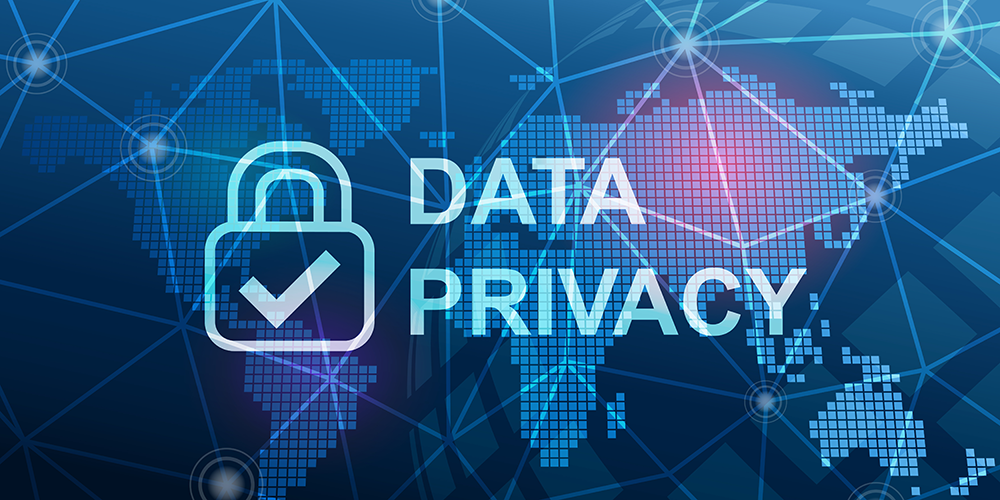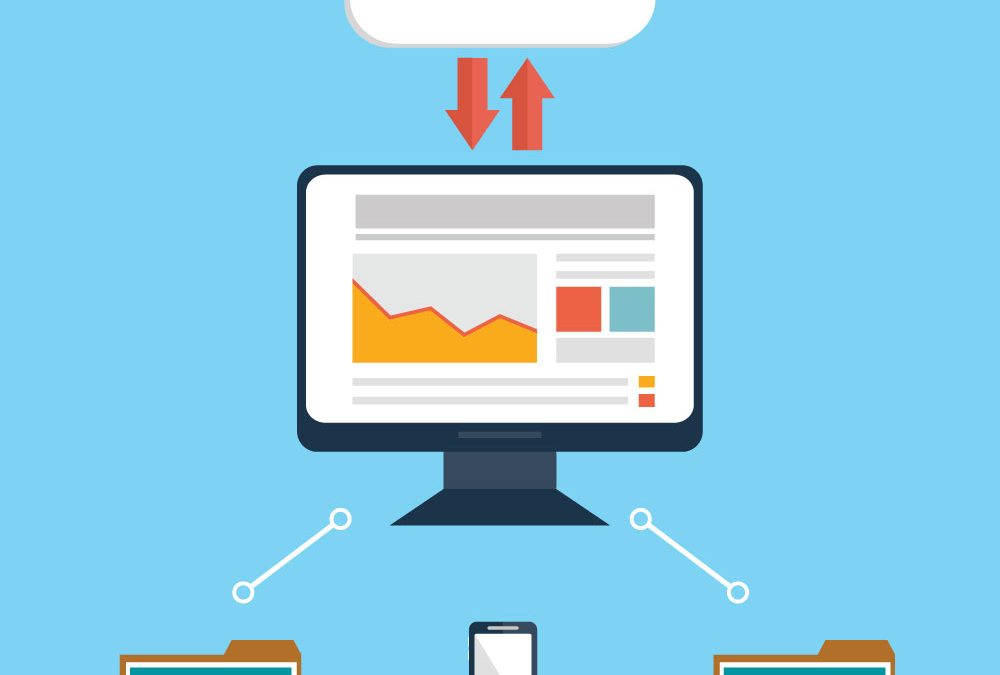
Jul 19, 2021 | SMB Technology, SMB Technology, SMB Technology, SMB Technology, Technology News
In our digital age, gathering information online is anything but difficult. It is imperative for both to keep information from landing in the wrong hands. Read on to learn about the crucial need to keep data safe, the threats to data privacy, and what to do about it. The Importance of Data Privacy A basic definition of data privacy is keeping confidential data confidential online and on computer systems. Privacy of information applies to collected personal information including medical and financial records, customer payment data, and customer data obtained from websites. Medical and financial data especially are subject to stringent regulations on access and security, and many companies indicate on their website how they use customers’ data in the course of business (if they don’t, they should). Personally identifiable data can be kept safe through encryption, and multi-factor authentication–for example, a password and at least one security question. Awareness of Threats to Your Data Ideally, basic measures to keep data private would be enough. But both existing and new threats continue to increase. For example, in recent years automated calls (“robocalls”) have proliferated, increasing more than tenfold in the last few years. Of the three to five billion robocalls each month, at least 40% are thought to be fraudulent. And phone calls are just one way bad actors attempt to steal your data. Phishing schemes via text or email can also be a way to get unsuspecting recipients to give up personal data that can be used for fraud or even penetrating company computer systems with malware. According to CompTIA, phishing scams account for more...

May 8, 2018 | SMB Technology, SMB Technology, SMB Technology, SMB Technology, Technology News
Migration to the cloud has become more common over the years, with more and more companies moving to the Cloud each day. Benefits of the Cloud extend to many if not all business systems—Communication and Collaboration, Email, file sharing and data storage to name a few. Read on to learn more about how companies, especially small to medium-sized businesses, are using the public cloud for their operations. Benefits and Characteristics of Public Cloud Overall, the public cloud offers a less-expensive alternative to private cloud resources, with many of the benefits. Like the private cloud, the public cloud enables businesses to avoid investing in the purchase and maintenance of costly hardware, since the underlying infrastructure is already available via the web. Capital expenses can then be converted to operating expenses. What’s more, the cloud is scalable and elastic, giving enterprises the ability to use more or less of the total environment according to different web traffic to their business at different times. Public cloud environments are ready to use, with required resources built in. Other characteristics named by the U.S. National Institute of Standards and Technology include the public cloud being open to more users and more enterprises. Finally, public cloud offers network access everywhere, since the data is accessible via the internet. Considering Public Versus Private Cloud As great as the public cloud is, it may not be right for your particular enterprise. Compliance with regulatory standards like Sarbanes Oxley, PCI and HIPAA necessitates confidentiality of information and restrictions on access to it. Companies that need to protect their customers’ and clients’ information will find a private cloud environment...
Apr 12, 2017 | SMB Technology, SMB Technology, SMB Technology, Technology News
Does your business have a backup and disaster recovery plan? Businesses of any size should know which applications–and their associated data–they rely on and what the cost of interruption would be in the event of an unintended disruption. Cyber Threat, natural disasters, and systems failures may impact your business; however, human error is said to be the top cause of data breach (58%), ahead of technology errors. To avoid unnecessary downtime, here are some questions to ask to help assess your backup and disaster recovery plans. Assess the Risks of Data Loss and System Downtime With Backup and Disaster Recovery there is always a balance between cost and risk. To allocate your technology spending, it is important to focus on your areas of exposure. Maybe your business relies heavily on an order-processing and invoicing system, or perhaps a manufacturing and inventory control system. If these systems go down you may lose revenue and productivity from employee idle time. You may also have intellectual property that is important to your business. What would be the consequence if this data was lost and could not be recovered? You may also have compliance exposure, if you suffered a breach of privacy or other data that should be encrypted was exposed. Assessing your risks and ranking the exposure is an important step to evaluate your backup and disaster recovery plan priorities. Not all Backup Plans are Alike For systems you rely on heavily, you may consider having an offsite failover system in the event of a data loss. This can minimize your downtime by enabling you to rapidly cut over to a...
Dec 13, 2016 | SMB Technology, Technology News
It is no surprise, technology flattens the world for many businesses. What’s more, nearly every business sector finds it necessary to collect, maintain, analyze, and monetize user data. Many think Cybersecurity risks only apply to highly regulated industries, such as legal, healthcare and financial services. Cybersecurity Risks Go Beyond Borders Factors outside industry, including geographic considerations and sensitive consumer data, can create cybersecurity risks that need to be managed. These factors run the gamut of domestic and international laws, regulatory bodies, and private-party business agreements. Cybersecurity compliance can touch every business to some degree. Internet of Things (IoT) and Cybersecurity Adding to the list of concerns are non-traditional technologies entering your businesses network. IP-enabled technology called Internet of Things (IoT) is rapidly being adopted in the workplace. The Cybersecurity threat is moving beyond desktops, laptops and services. A new generation of mobile devices–Point of Sale (POS), IP video surveillance, embedded sensors, VoIP, and others–is just the first wave of emerging technologies that need to be secured. How to Minimize Cybersecurity Risks There are many things a business can do to reduce Cybersecurity threats. According to the Computing Technology Industry Association (CompTIA), the following elements are the building blocks for a cybersecurity program: Documented policies, procedures & standards Asset management Identity & access controls Risk management Vendor management Physical & environmental security Compliance Privacy Remote access Data backups Data destruction Cybersecurity threats are a reality of today’s world. The risks of data compromise and/or loss can cost more than dollars; such risks can cost your reputation. Your business is only as secure as your Network. If you have questions about...
Dec 14, 2015 | News, SMB Technology, Technology News
Are your IT Systems on the naughty or nice list? Do you proactively monitor your networks for compliance, cyberthreat and performance? Are your data back ups up to date? Have you begun your migration to the Cloud? Are you getting the most from your broadband network? Have you trained your employees on the risks of cybersecurity attacks and do they change their passwords regularly? Here is a list of things to add to your list of New Year’s resolutions for 2016. Proactive Network Monitoring Your networks shouldbe periodically monitored to ensure application and operating system (O/S) patches are up to date. In addition, you should maintain your anit-virus definitions and keep your malware threat detection up to date. By doing so, you could prevent an unwanted cybersecurity breach and data loss. Worse, loss of reputation resulting from data leaks or loss. Beyond Backup There are a variety of remote back and data protection solutions to ensure you can recover your systems to keep your business running. It is a good idea to test those backups periodically to ensure you can restore your data quickly. May older tape backup solutions can be slow and unreliable. What’s more, there are many new file sync and sharing solutions allowing your employees to securely access information anywhere. We put more and more reliance on our applications to run our daily operations, so make sure your data is protected in 2016. Lift Your Business to the Cloud Cloud Solutions offer many advantages over premise based systems. Using subscription based services help ensure you are always on the latest version, what’s more, you can shift...




